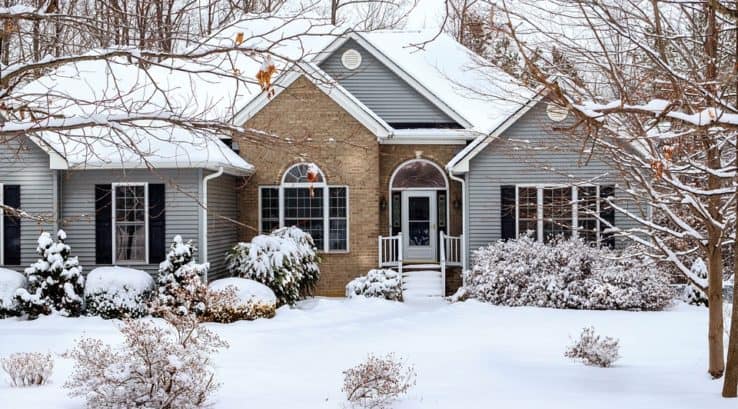After a slow start to the winter season in many regions, Old Man Winter has made his presence known in both January and February. When the mercury drops and the cold winds start whipping, that cold air can find its way into your home. Any break in your home’s “envelope” – the outer shell of your home that protects its contents from the elements – is a prime source for air leakage.
Of course, typically it’s the windows that account for the most surface area in your home’s envelope openings. And when you have old or inefficient windows, air leaks can make the temperatures inside your home uncomfortably chilly during the winter, not to mention the added wear and tear on your HVAC system as it struggles to maintain the thermostat temperature.
Your old, leaky windows may have you considering a window replacement project, especially if the inside of your house is cold during the winter. “But wait!” you wonder, “why would I replace my windows in the winter? My house will be freezing during the project!” This is where doing a little research comes in handy. When looking for a window installer, you need to find out the standards they follow to keep your home from getting cold during installation.
Interview potential window installers and ask them specifics about their installation process.
Here are four key practices installers should use during your window replacement:
1. Remove one window at a time: During a window replacement project, installers should remove only one window at a time and replace it with the new window before moving on to the next one. That way, they limit the number of openings exposed to the cold air outside.
2. Utilize plastic floor to ceiling barriers: For larger openings, such as a bay window or bow window installations, which are made up of a number of windows such as double pane windows and picture windows, the installer should cover the opening with plastic floor to ceiling barriers.
3. Keep doors closed: When replacing a window, the installer should keep the door of that room closed, limiting the amount of cold air that can find its way into adjoining areas of the home.
4. Cleanliness practices: Along with winter cold also comes mud, whether from rain or snowfall. Installers should use tarps, shoe covering booties, and other practices to ensure your home remains clean.
Once you decide on an installer, you now feel more comfortable scheduling your window replacement in the winter. But there are other benefits to replacing your windows during the winter season as well:
1. Schedule: Often, contractors, and installers experience a lull in business during the winter months, especially after the holidays. Chances are you can get your window replacement scheduled much sooner than you could in the spring or fall.
2. Affordability: Along with easier scheduling, contractors and suppliers may offer discounts, sales, or other incentives during this slower season.
3. Monthly expenses: Once your new windows are installed, you will experience the benefits of energy efficient windows. In addition to warmer rooms, you should start seeing immediate savings on your winter energy bills.
Your old, leaky windows can make your home uncomfortably chilly in the winter. Hiring the right contractor to install your replacement windows will keep your home comfortable during this winter project. And you get the added benefits of easy scheduling, potential discounts, and reduced energy bills. Don’t be afraid – schedule your new window replacement!
Call Thompson Creek today for a no-obligation quote at 888-696-7105.




